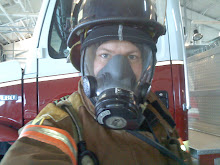 This is a picture of my lawn tractor after the first wave of improvements. The unit is a Sears Craftsman model ST/16, and though I can't find any information I estimate it to be over 30 years of age. I purchased both this tractor and my lawn mower (another ST/16 in far worse condition, equipped with a 48" mower deck in lieu of the plow) for a total of $300 from one of my friends. And, both at the time and in retrospect, it was $300 very well spent!
This is a picture of my lawn tractor after the first wave of improvements. The unit is a Sears Craftsman model ST/16, and though I can't find any information I estimate it to be over 30 years of age. I purchased both this tractor and my lawn mower (another ST/16 in far worse condition, equipped with a 48" mower deck in lieu of the plow) for a total of $300 from one of my friends. And, both at the time and in retrospect, it was $300 very well spent!The ST/16 is a 16-horsepower lawn tractor. According to my friends at the time this unit was made a 16-horsepower rider lawnmower was invariably built to commercial standards, and this is quite evident in it's construction. All of the working parts are made of steel, and all critical assemblies are easily accessable. The Tecumseh-built engine is air-cooled, is equipped with Timken roller bearings on the crankshaft and is capable of running flat-out for hours on end without problems! This tractor is in prime condition, however despite having more than a few problems the lawnmower does still get the job done, and extremely quickly; it seldom takes me more than an hour and a half to mow my 2-acre lawn!
When I purchased this tractor it came with the plow, snow chains and that large concrete block mounted to the 3-point hitch. The block is intended to provide more traction weight, however left it useless for pulling. I remedied this by fabricating a drawbar out of heavy barstock and attaching a "universal hitch" to the end of it. As you can see the hitch includes a ball, a tow hook and a pinhole hitch point, as well as a loop for attaching safety chains. The drawbar is attached to the tractor frame via a 3/8" grade 8 bolt, and I have tested it as being capable of withstanding a greater strain than the tractor's limited weight and power can produce!
On Friday, after nearly taking out a road sign when trying to enter Chestnut Street I thought it was a prime oppertunity to test out the plow. All I have to say is that I am VERY impressed! I was able to plow out Second Street, the portions of both Chestnut and Walnut Streets between Second St. and US 24, as well as the intersection of Walnut St. and Third St, and the unplowed portion of the intersection of Third St. and County Road 4A, in about two hours and with less than a gallon of gas! I did this work wearing my safety vest to help assure my visability. During my second round I donned my TLEW hard hat, since tree limbs were falling due to the severe icing earlier in the day.
More in Part 2...









